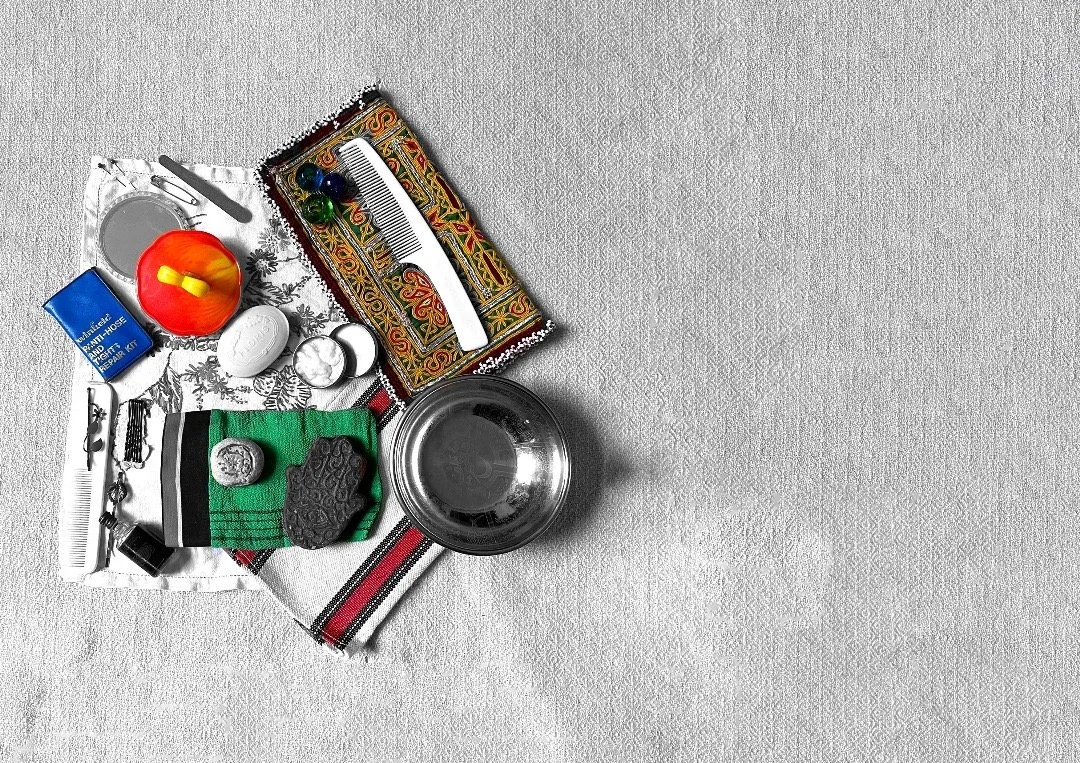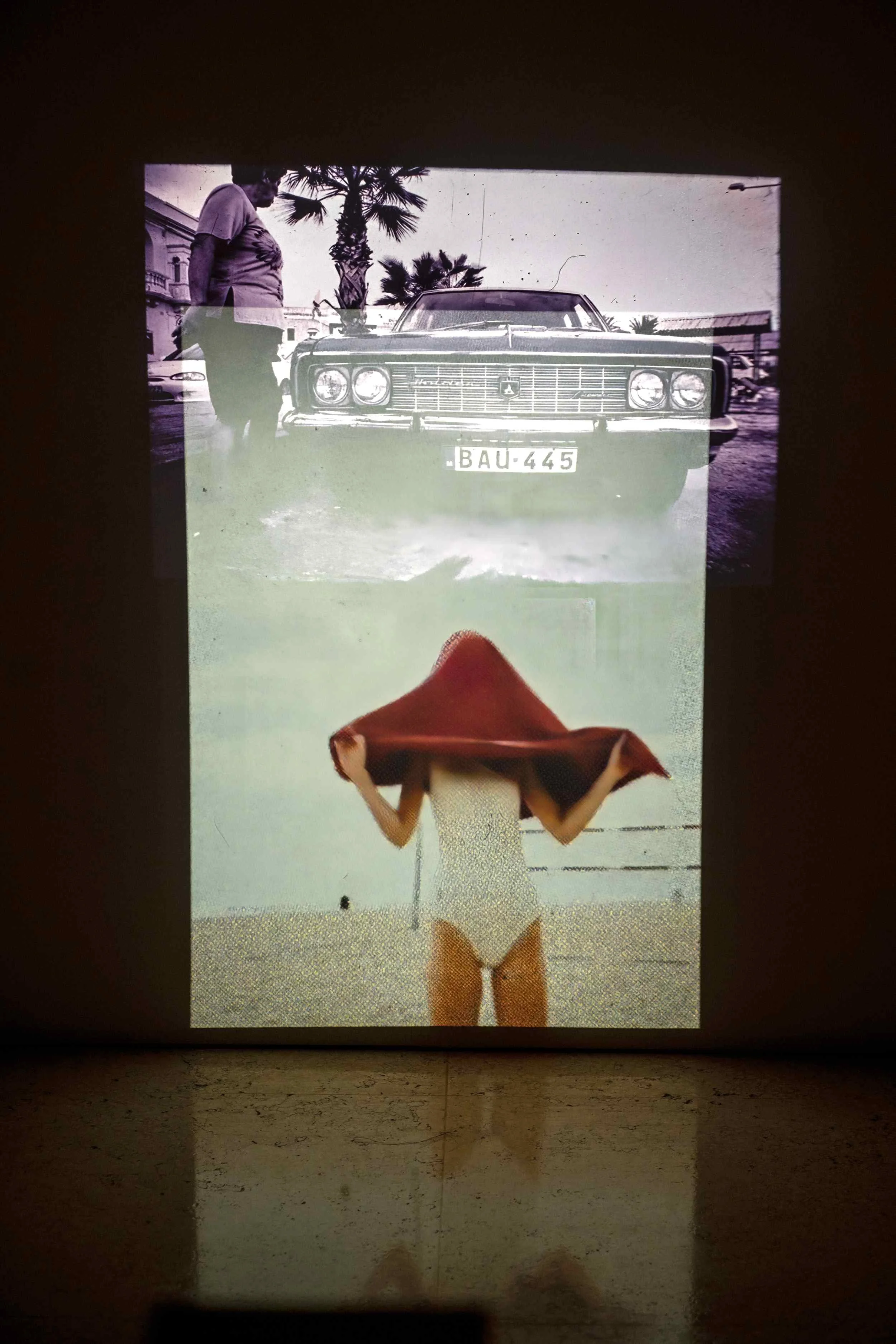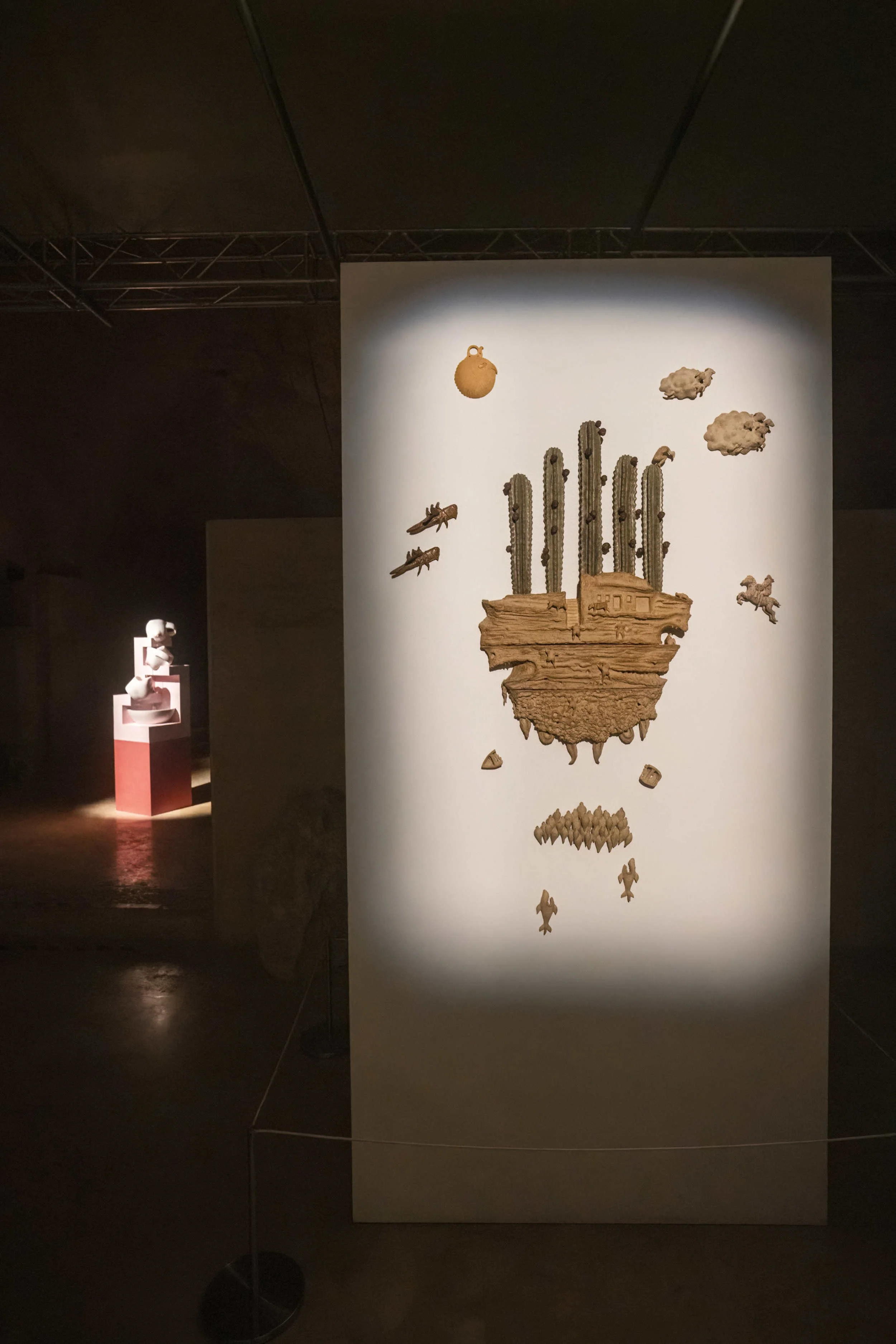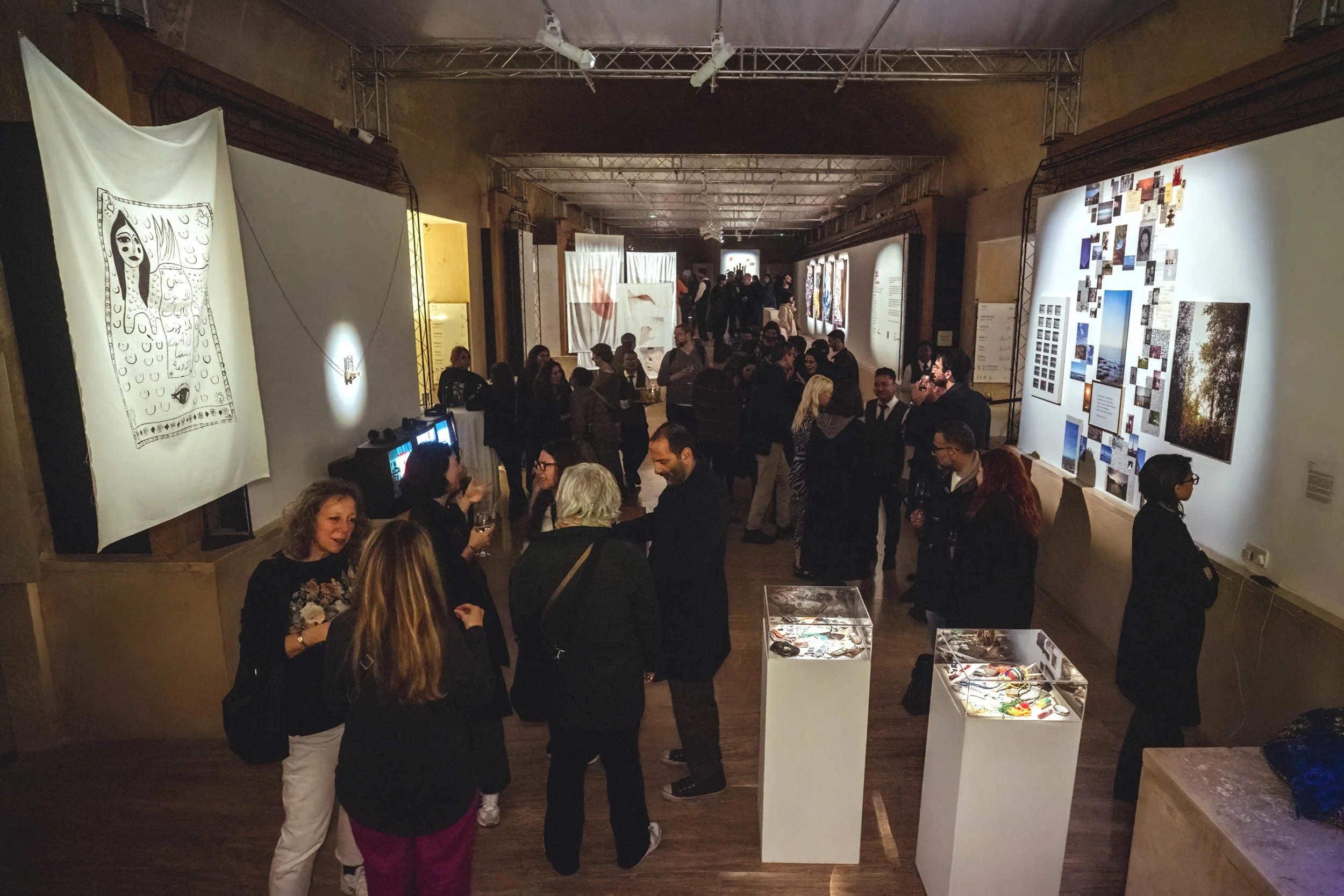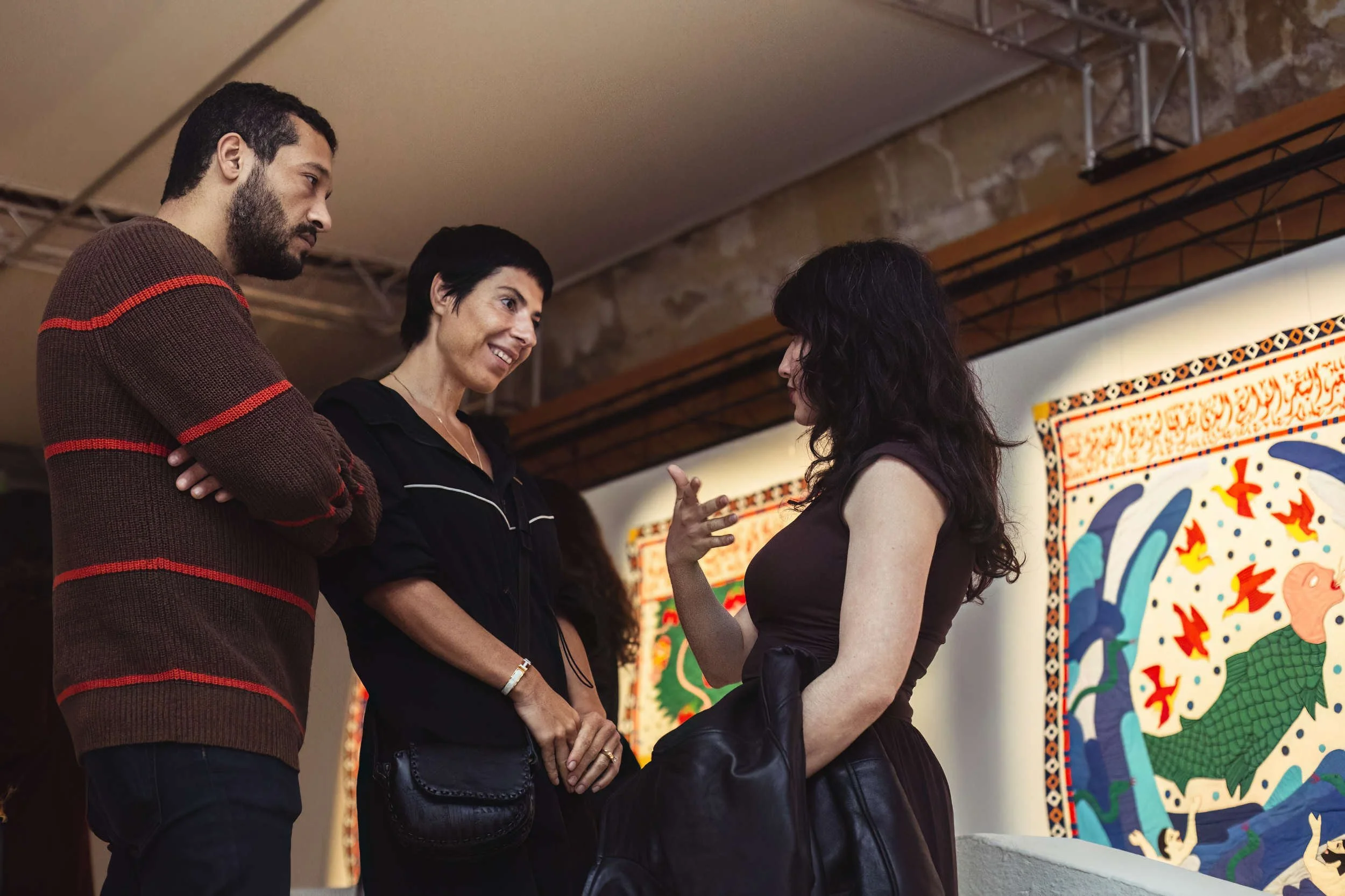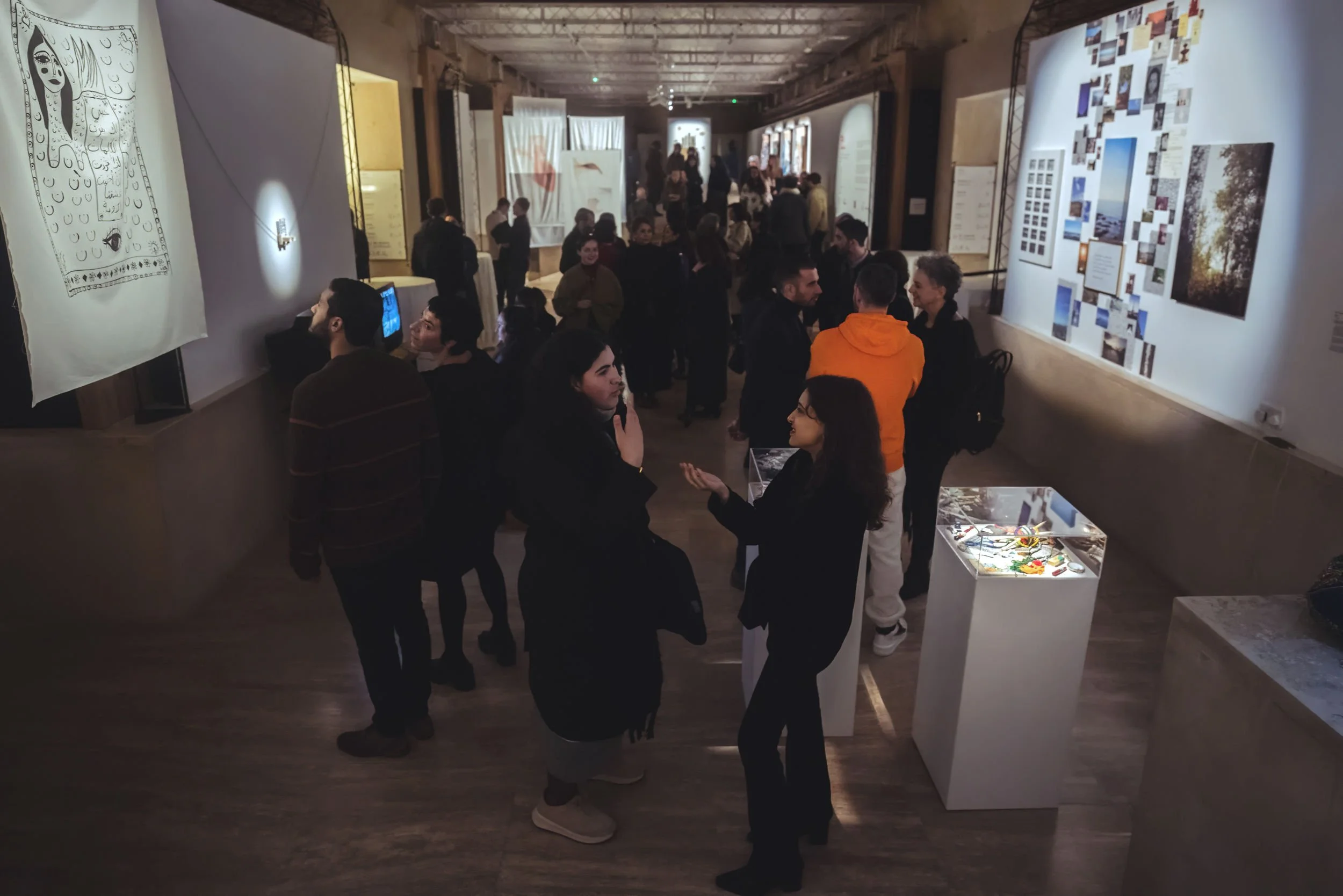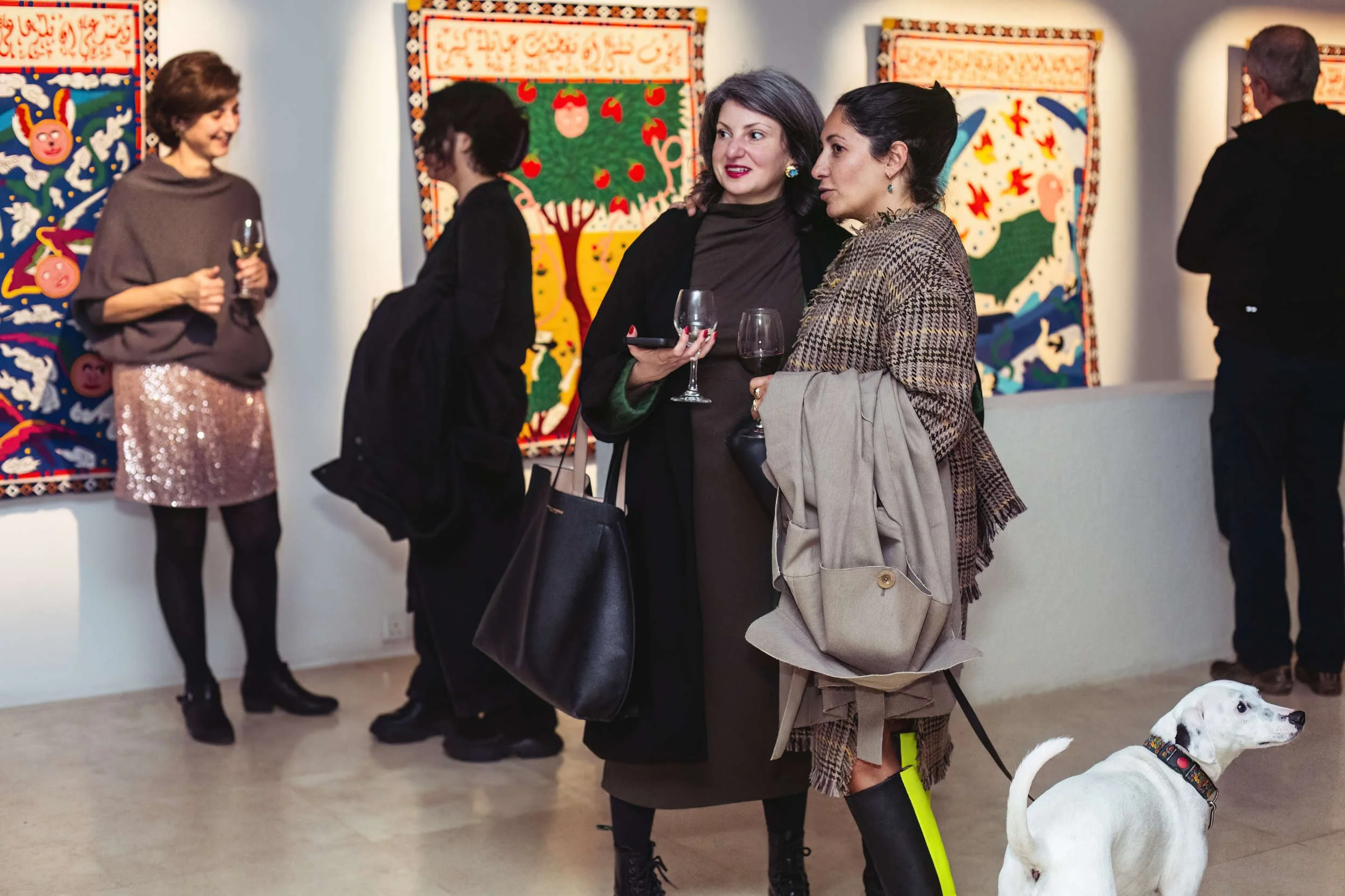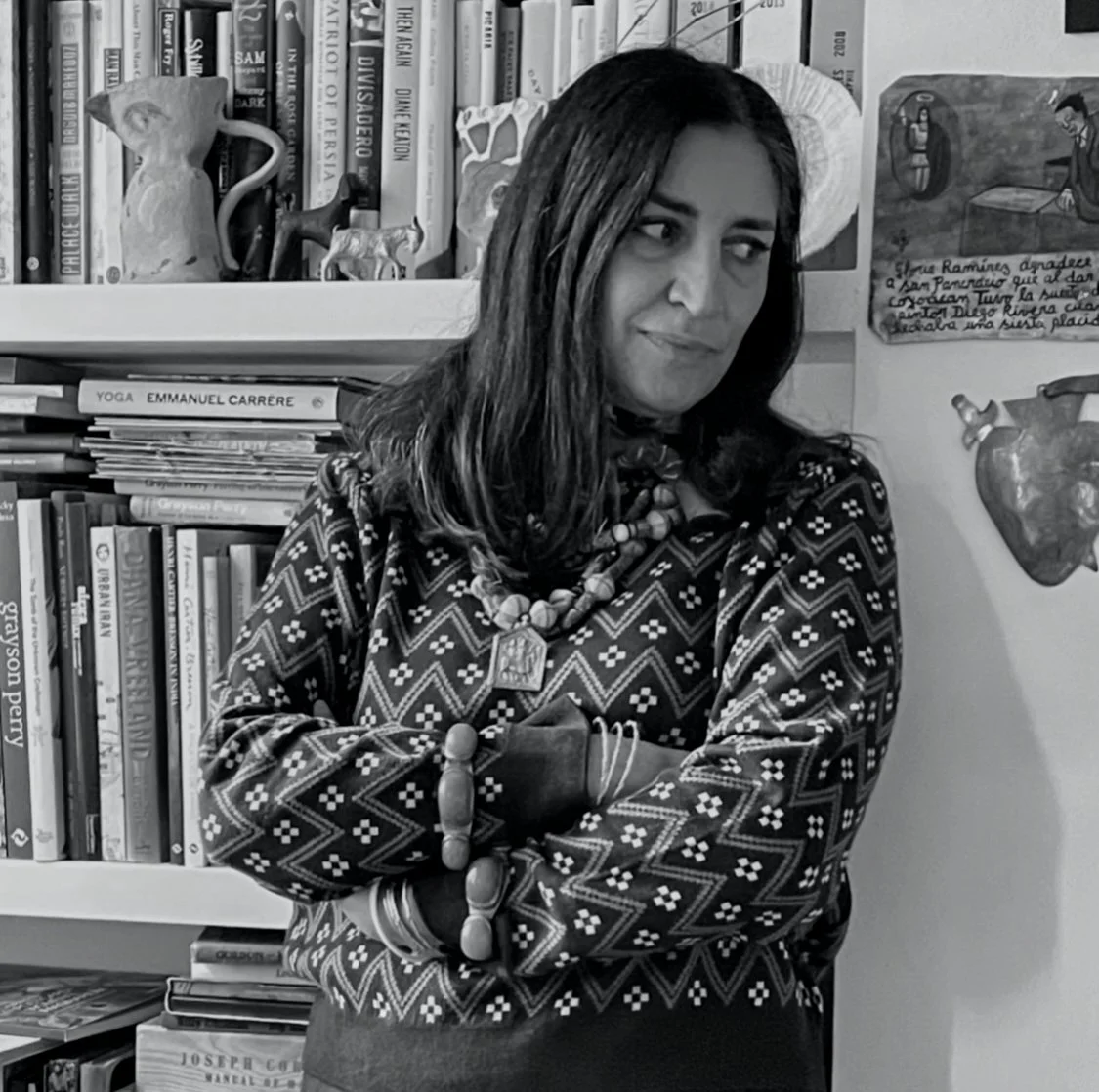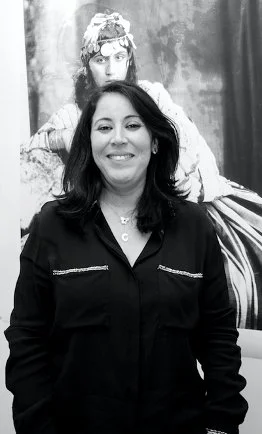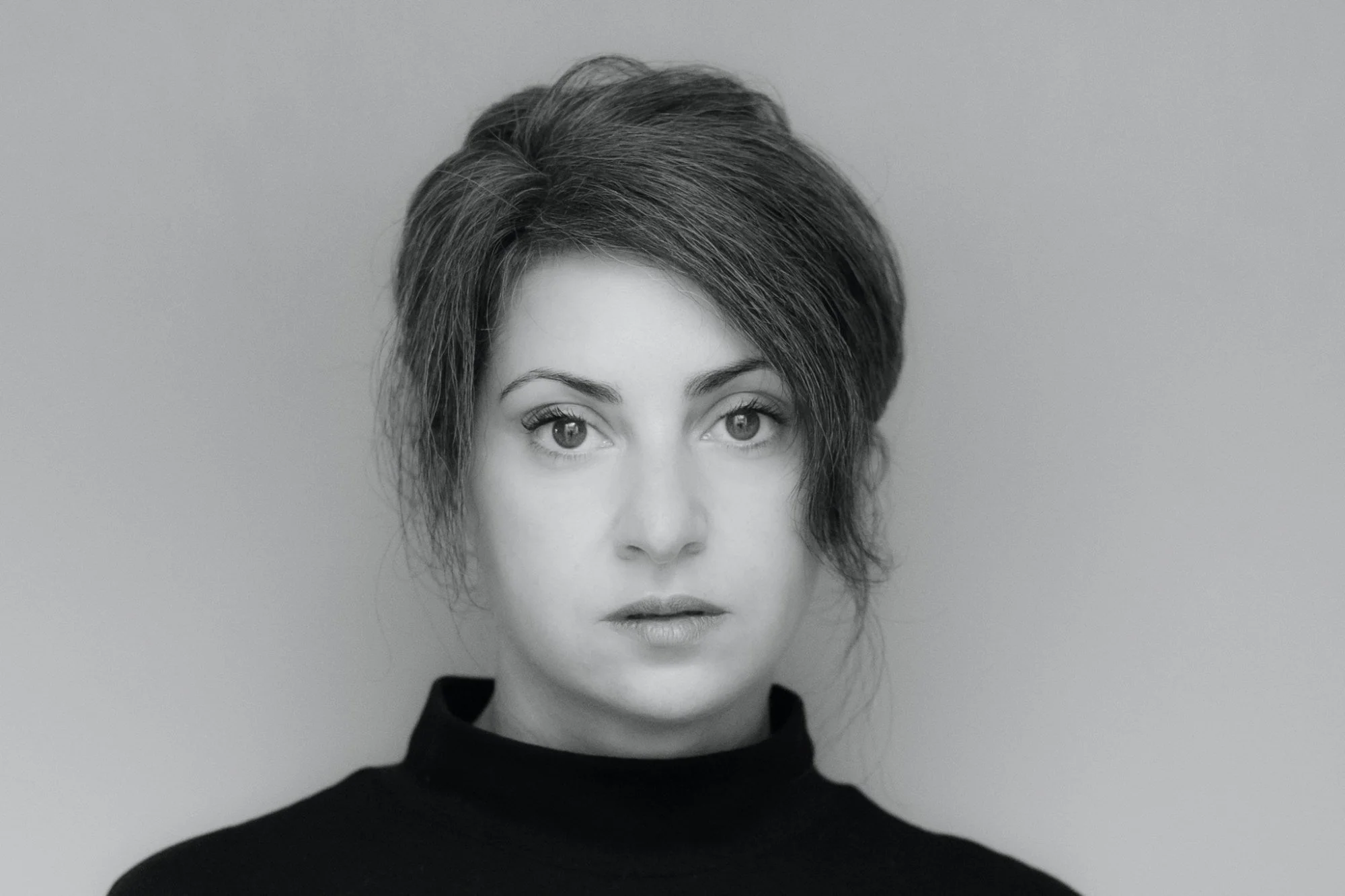Small Bones of Courage
7 March - 27 April 2025
Space A, Spazju Kreattiv
Valletta
Artists
Afsoon| Aya Al-Barghati | Sam Alekksandra| Charlie Cauchi | Ioulia Chante | Malak Elghuel | Maria Kasaab | Esmerelda Kosmatopulos | Sarah Smahane | Sandra Zaffarese
Curators
Najlaa Elageli| Margerita Pulè
A Spazju Kreattiv commission, and supported by the Malta Tourism Authority
A collaboration with Noon Art Projects
Exhibition opening
Friday, 7 March 2025
Artist talk: 6pm, Studio B
Opening, 7pm, Space A
Curator tours
Saturday, 22 March 2025, 11am
Sunday, 27 April 2025, 11am
Grief will find you in the end
Wednesday 2 April 2025, 7pm
A collective workshop with artist Sam Alekksandra and movement guide Fran Zammit.
Playing with Shapes & Forms
Wednesday 23 April 2025, 11am
A hands-on collage workshop with Ioulia Chante. Through playful experimentation with collage, tracing, and drawing, participants transform abstract compositions into imaginative landscapes, cities, and journeys.
Freedom Fields
Tuesday 22 April 2025, 7pm
Filmed over five years, Freedom Fields follows three women and their football team in post-revolution Libya, as the country descends into civil war and the utopian hopes of the Arab Spring begin to fade.
Geopolitics, climate-change and global tensions have infinite repercussions upon the lives of people all around the world. Every life-choice, every act of migration is a distillation of the universal into a personal experience.
Small Bones of Courage forms a profound contemplative space, where complex themes of self-identity and personal geography are explored and negotiated by women artists who share an experience of a dislocation or fragmented memory. Their work reflects a universal poetic landscape; that of the jagged terrain of the heart and the distant vistas of memory.
Each artist charts her own identity; creating connections between old and new knowledge through memory and experience. Small bones of courage emerge, as infinitely personal acts of tenacity are remembered. Each artist’s story is a physical and individual form of migration.
The works in the exhibition – many of which are intensely delicate and sensitive – reflect the emotion invested in the drawing out of the artists’ inner lives. Together, the works convey the recurring phenomena of absence and disappearance in the artists’ mapping of intimate terrains, as they narrate stories of families, women, war, displacement, history, and migration.
[The title Small Bones of Courage is the title of a song by the New Zealand songwriter, Aldous Harding.]
Afsoon
The Adventures of Her Ladyship
2019, Mixed-media, collage, single-channel projection
Afsoon's series The Adventures of Her Ladyship is an installation based on a 19th-century fairytale, which she came across in an obscure book of Persian legends. Its overt sexuality and cruelty, alongside the humour contained within the stories, intrigued her. The series focuses on Afsoon's favourite heroine, who possesses confidence, resilience and, of course, a voice that would not be silenced!
"I grew up reading fairytales like many other kids of my era. I loved how I could imagine myself being a part of the story. I could be riding horses, sailing ships, going hunting, or even searching for a golden egg. However, I was always slightly uncomfortable if the tale was simply about finding a prince to marry.
"One fairytale, especially, always scared me: The Little Mermaid. While some friends loved the mermaid's long blonde hair in illustrations and the blue-eyed prince, I found the idea of giving up your voice to walk on painful feet was terrible. Surely, it was a much better idea to be able to sing, talk, laugh and swim around the blue sea. To me having a voice was better than being able to walk!”
Sam Alekksandra
CHAOS MMMMEMORY PALACE
2025, Three-channel video installation, View-Master
CHAOS MMMMEMORY PALACE explores intergenerational subversions of memory. The artist engages her grandmother, Nanna Madeline, to create their own "chaos memory palace", an ancient memory technique where one creates a sort of a subconscious storage unit, to explore the corners of what remains after things are remembered.
Sam Alekksandra, who lives with memory loss, engages her grandmother who, while teetering on the verge of dementia, loses her ability to speak and move during the making of the work. CHAOS MMMMEMORY PALACE pieces together fragments of love, loss and the imminent present.
loulia Chante
Floating Utopia
2025, Ceramic relief
"Floating Utopia captures the essence of a piece of land and the many
trajectories that shape it into what we call society. It draws on the universal imagery of 'Utopia' while adapting it to the Mediterranean landscape.
"When I applied for a job across Europe, I found myself here - on a land I knew little about. I arrived without great expectations, without burdens, without force - simply by chance and privilege. This is a place where the culture felt both strangely familiar and distinctly unique. A land of opportunities.
"Here, I encountered countless people - migrants with stories of their own. Some journeys were smooth, others harsh, many heartbreaking. Layers of struggle and resilience unfold, shaped by forces both visible and hidden, where survival and ambition collide within an ever-shifting landscape.
“Floating Utopia is a miniature representation of diverse movements, rich with symbolic allegories. It embodies the precarious balance between hardship and hope, the silent forces that shape destinies, and the hierarchies that emerge within migration's ebb and flow. A reflection on how these shifting narratives of displacement, adaptation, and power continuously redefine the contemporary economic and social fabric."
Maria Kassab
Forbidden Encounters
2023, Ink and acrylic on paper
Forbidden Encounters explores the challenges and frustrations faced by women who dare to express their sexuality in the Arab world, as they face oppression from patriarchal systems that label them as immoral and objectionable.
The series presents a fictional narrative that responds to these societal realities, transforming them into brief stories and miniature poems. Maria's simplistic drawings depict intimate conversations, desires and the idealisation of gender relations.
Inspired by the Centaurides (female centaurs), each narrative introduces characters, including a central figure that is a blend of animal and human, alongside other animals that symbolise sexual liberation. This illustrative journal of encounters conveys and reinterprets these desires, serving as a suggestive guide for viewers to explore a folkloric dimension of intimacy and fetishism.
Sarah Smahane
In Between
2024, Printed image
By using different alphabets and languages, Sarah expresses her mixed Arab, Amazigh, French and Muslim backgrounds, exploring what it feels like to have different roots and finding ways to integrate them.
“As a woman belonging to the Moroccan diaspora in France, I grew up exposed to multiple cultures and influences. One of the main influences was music, as I turned to traditional, instrumental, and vintage music from the Middle East and North Africa. I was first introduced to this as a child by my paternal grandfather in Morocco, who listened to artists like Asmahan, Abdel Halim Hafez and so on, artists who fascinated and motivated me. These singers poured their sincere and deepest emotions out with lyrics that are still impactful and timeless up until now.
"Through the 'In Between' series, I want to share a journey many people who grew up elsewhere or amid plural identities can relate to. Using Arabic, Latin and Tifinagh letters - that I handwrite with black ink is my way to express and embrace the Arab, Amazigh, French and Muslim selves that shape all of me.
"My artist's name, Sarah Smahane, is also a strong manifestation of this reappropriation of my complete identity and a tribute to my personal history. This is a story, and one of many, which I want to translate and put a spotlight on, to carry it like a banner. It is ultimately a self-narration towards self-acceptance and the embrace of all my identities."
Sandra Zaffarese
The Mark on the Wall
2025, Slide machine, 35mm slides & artist's book
Virginia Woolf's short story The Mark on the Wall is often seen as a stream-of-consciousness narrative that delves into the inner workings of memory.
The story, which begins with the narrator observing a mark on the wall of her room, spirals into an exploration of the mind's fluid, fragmented recollections. The narrator's thoughts flit from one idea to another, moving from simple curiosity about the mark on the wall to reflections on war, childhood, literature, and even the fleeting nature of time.
Just as Woolf's narrator moves through a fragmented stream of consciousness, the slide projector flickers through the images and text in a sequence that is often disconnected or jarring, yet still offers a way of piecing them together to create a narrative or meaning.
Continuing with her use of literary text and obsolete technology as a medium, Sandra reinterprets this short story by incorporating her collection of found and inherited images. She simplifies the text to an almost bullet-point style, which aligns with the original carousel slide presentations of years past. The slide images offer a tangible representation of memory - images that can be physically displayed to convey meaning - while the text portrays the intangible workings of the mind. Together, they engage with the idea that memory exists not just as something stored, but as something that can be perceived, processed, and altered.
Afsoon
Private Life of a Bag
2025, Mixed-media and textile
"When I was a child in Iran, I was looked after by a wonderful woman called Gohar. She and I were inseparable, and I went almost everywhere with her. The one exception was her Friday visits to the hammam. Every Thursday evening, I would sit next to her as she packed her bogcheh, a little cloth bag, for her weekly visit to the hammam. I remember being fascinated by all the little things she would put in there: combs, a small hand cream, her modest bottle of 4711 cologne, her clean towels... Suddenly, she would become a stranger before my very eyes. One moment, she was the person I knew and saw every day; the next, she was a mysterious woman with another life. A life that was completely separate from mine, made evident by what was inside her bogcheh.
"I have always thought that women lead a double life. What they show to the outside world and what they carry inside are usually very different, and the evidence of this lies in what we hold inside our bags. There have been articles, photo essays and installations about the contents of women's bags because that's where we can expose ourselves entirely. After all, it is only for ourselves. So, what do we really carry with us, and can we reveal our secrets by spilling the contents of our bags?"
Aya Al Barghathy
Documenting Departure
2022- 2024, Photographic prints
Aya uses her lens to document the aftermath of the 2014 Libyan civil war as it impacted the eastern city of Benghazi, placing herself both as a local grieving the city's memory, and as a woman navigating a marginalised identity.
"To avoid the burden of words that might condemn me - and with no tears left to shed - I turn to photography, not by choice but out of necessity. Through the lens, I capture thoughts, emotions, and unshed tears, framing them in a multidimensional way that silently witnesses my ongoing struggle: to hold on to life or let it slip away.
"In recent years, I've documented not just my own departure but also the city's slow withdrawal from within me, creating an exile of my own making. We coexist in a fragile truce, always on the edge of breaking. Leaving has never been simple for me; it's a process, a lingering attachment. Even when I try to let go, I remain rooted, watching as places, people, and cities drift towards new horizons.
"And now, I watch Benghazi retreat from me. I capture her in secret, knowing that in this city, photography is an act shadowed by suspicion. My fear of my hometown has shaped how I see every other place. Wherever I go, I observe, follow, and photograph with a quiet unease a feeling that has become a part of me."
Charlie Cauchi
The Line Ends with Me
2025, Film installation with objects and archival material
Her mother died abruptly, choking at lunch in a Mexican restaurant. Later, looking at images of her mother, she can't help but notice the striking resemblance in their eyes and facial features. However, it is not the inherited physical traits that weigh on her mind, but her mother's traumatic past, which has led to changes in her DNA, and she is deter- mined to break this cycle.
Since her mother's passing, the artist's family archive has raised more questions than can ever be answered. With her mother as subject, the artist uses new film work and personal archives to explore maternal relationships and elusive truths buried within the fragments of intangible memories and tangible documents. This work is entrenched in trauma and the necessity of discontinuity.
By placing herself within the frame alongside her mother and other family members, the artist attempts to explore their lives and her own through the interplay of factual evidence, fantasy and memory. The work grapples with the notions of family, motherhood and the nature of recall and trauma. It also wrestles with the reconfiguration of identities after traumatic events, and how her mother's history has impacted on her formation as a person, for better or worse.
The Line Ends with Me is part of a broader work, and features fragments from a wider narrative.
Malak Elghuel
Shot through the Skin
2022-2025, Photographic print on fabric
Shot through the Skin is a series of mixed media images produced by Malak, inspired by her experience of being a woman in a public space in Tripoli, Libya in 2022, where the male gaze appeared to scrutinise and violate her personal space.
Malak initially wrote a poem to process and archive the moment, which later led to the production of these images. Using bodies and foam sheets to mimic feelings of discomfort and distress, she then overlays the images with other materials, scanning them over and over in an act of catharsis.
Esmeralda Kosmatopoulos
The Jinn from the West
2024 ,Tapestry
It is the story of a white woman raised in the cradle of European Enlightenment who decides to make her home in an Eastern land. It is the story of a man from the land of the Pharaohs, who falls madly in love with this exotic woman and decides to marry her. It is such a banal love story, where two cultures meet, and their prejudices come face to face. It is Esmeralda's experience of mixed marriage within Egyptian society.
"Western women are nymphomaniacs. She will come to your house on the first evening."
"Western women have plenty of money."
"She will buy you a car."
"Western women have a passport that means gold. She will get you a Schengen visa."
"Western women are bad wives. She won't take care of you and your house."
"Western women are bad mothers. She will abandon you and steal the children."
The Jinn from the West vividly illustrates some of the pervasive fears and entrenched prejudices that loom large in Eastern society regarding Western women. In a series of ten embroidered artworks, these whimsical pieces explore some of the potential perils awaiting any mixed-race relationship, as echoed in colloquial wisdom of the masses.
Drawing inspiration from the aesthetics of pre-Islamic literature such as the Shah Namah or the Kitäb al-Bulhän, these vibrant pieces employ the traditional Egyptian khayamiya technique. The unique method intricately involves hand-applying pieces of coloured fabric onto large canvas panels.
Historically used to adorn the interiors of tents during weddings and other festive occasions, the panels now serve as a canvas to depict the intricate dynamics of a tumultuous love affair between a mischievous Western enchantress and a naïve Eastern protagonist ensnared in her charms.
The Jinn from the West works aim to shed light on the experience of being the foreigner or ajnabiya in Egypt, through the prism of cultural differences, wherein the images can arouse fascination, as well as distrust and misunderstanding. On the one hand, the woman is romanticised as a symbol of freedom, financial autonomy and progressive thinking; but, on the other, she is viewed as a threat to traditional values and social harmony, with concerns that her individualism could destabilise long-standing family and societal structures. Straddling the divide between aspirations for modernity and apprehensions about the erosion of traditions, these Western Jinns encapsulate the cultural and social tensions that persist.
Exhibition
Artist Talk
Friday 7 March 2022 | Space A, Spazju Kreattiv
Exhibition Catalogue
Curatorial Note: Najlaa Elageli, Margerita Pulè
Graphic Design: Alla R. Budabbus
Opening night
Photos by Elisa von Brockdorff
Bios
